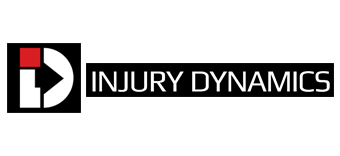Effective Human Incapacitation

“Effective human incapacitation results from physiological phenomena.” †
The goal of life-or-death violence is complete and irrecoverable incapacitation — to remove, entirely, the person’s ability to think or move. (Preferably both.) We are not attempting to communicate, or reason with, or change the mind of the person we are breaking. We are not trying to “make them stop” — we are making it impossible for them to continue imposing their will on the physical world. For this we need unambiguous incapacity — an obviously nonfunctional state.
They need to be laid out on the deck, body contorted in trauma, silent and still — or convulsing and braying with agonal breathing:
If there is any doubt, continue breaking things until you would feel 100% comfortable turning your back on them and walking away.
Context is crucial here: we are talking about your attempted murder. For social considerations, capitulation is sufficient. The tension of an argument ceases to ratchet upward when someone leaves, or changes tack by simply apologizing, walking things back with words or otherwise shifting into a posture of de-escalation. In life-or-death violence stopping at the request of your would-be murderer can get you killed. This is equivalent to shooting an armed man once, and then stopping because he said he was done… the only thing preventing him from shooting you dead is his word-is-bond honesty and the trust inside your own head — mere ideas, as weightless and intangible as ghosts. Much better to trust in the concrete beneath your feet.
The gold standard for “nonfunctional” is an interruption of brain function; without a firearm this is most easily and quickly achieved via concussion. With boxer-like precision and good timing this can be had by catching the person “on the button” of the chin to snap-rotate the head — an oversized result for what looks like relatively little effort; but we are not interested in getting into a fight and waiting for an opening to deliver that single specific shot. As with everything in life-or-death violence we are interested in absolute overkill. If an arm delivering roughly head-equivalent mass-in-motion to the head at speed is sufficient to “shake the pickle jar” and result in a KO, then his entire mass falling, accelerated by your mass in motion, and terminating in the collision of his head against the ground should be more than enough to get it done. And if not, well, now he’s down and you can impart huge accelerations into his head with your boots.
Everything we do in violence — every thought, every movement, every injury — is done in service of this goal. The kick to the groin — as awful as a real, full-bodied, hard-as-humanly-possible shot can be — is only there to render him incapable of preventing, or safely landing, a sudden fall. We only need a moment of traumatic preoccupation — the body’s spinal reflex in response to injury, the executive function’s “What the fuh—?” stutter — for us to take advantage of that precious loss of function and balance and turn it into a very bad, targeted fall. It’s the dirty rotten poker-table flip in order to pull our holdout gun and shoot the man in the head… with the impossibly heavy bullet of the planet.
If everything hinges on that function-obliterating *smack*, then all action in violence is done in anticipation of it. And the sooner the better.
One critique we often hear at our “Dangerous in a Day” and Crash Course trainings is: “I really wish we could’ve worked on more ‘stand-up’ stuff — it seems like I only got to land a couple shots, then my partner was down, and all the rest was me stomping on them.”
First, isn’t that how you’d like it to go in the real world? Do you want to get into an extended brawl where the loser gets set on fire? Remember: the longer it goes on, the more likely you are to make a mistake, and the more likely the other person is to get something right. And whoever gets it right first, wins. Wouldn’t you rather break a couple things on the standing man, put him down, and then finish him on the ground? (This line of thought — the desire to do more “stand-up” work — stems from a misunderstanding of what we’re up to; it’s the conflation of “fighting” with “killing”, the social and antisocial bleeding into the asocial, like using wrestling against a firearm: which would you rather do, wrestle him or shoot him?)
Second, this is precisely how instructors work out. Every turn on the mats is about seeing how quickly — and how hard — we can put the man down. It all starts with blunt force trauma, breaking something important, with the second or third shot being the takedown or throw. This is because we know what’s at stake — and what we would do if someone failed to shut us off — and so we’re interested in getting it over with as efficiently as possible. Injury to the body makes injury to the brain easier… and more severe.
Third — and most importantly — this is how it works in the real world. The effective use of violence does not look like a fight. It looks like a beating. We don’t see gut-wrenching, abject brutality in a toe-to-toe stand-up fight — such a thing is interesting and exciting in a social (or even antisocial) context. But one person standing over another, stomping their unresponsive form? That looks like nothing else. Acts of violence that are morally shocking are entirely one-sided, entirely unidirectional: one person doing it, one person getting done. And we seek only to model reality on the mats.
So — hate the brain. Drive everything toward that traumatic plunge with the hard stop at the end. Break the body out from underneath the brain, deprive it of its tools, take and take and take and then spike Nature’s Ming vase — ancient, unique and fragile — into a thousand incoherent shards.
— Chris Ranck-Buhr
† Duffy, Michael J. “Cranial Gunshot Wound Incapacitations.” 2016.

